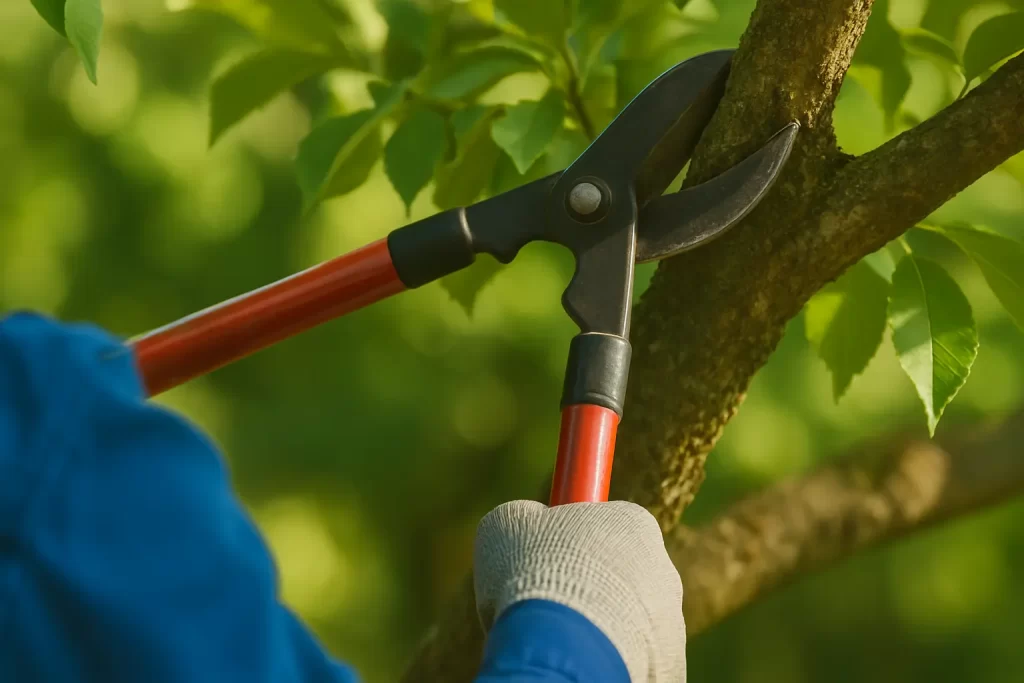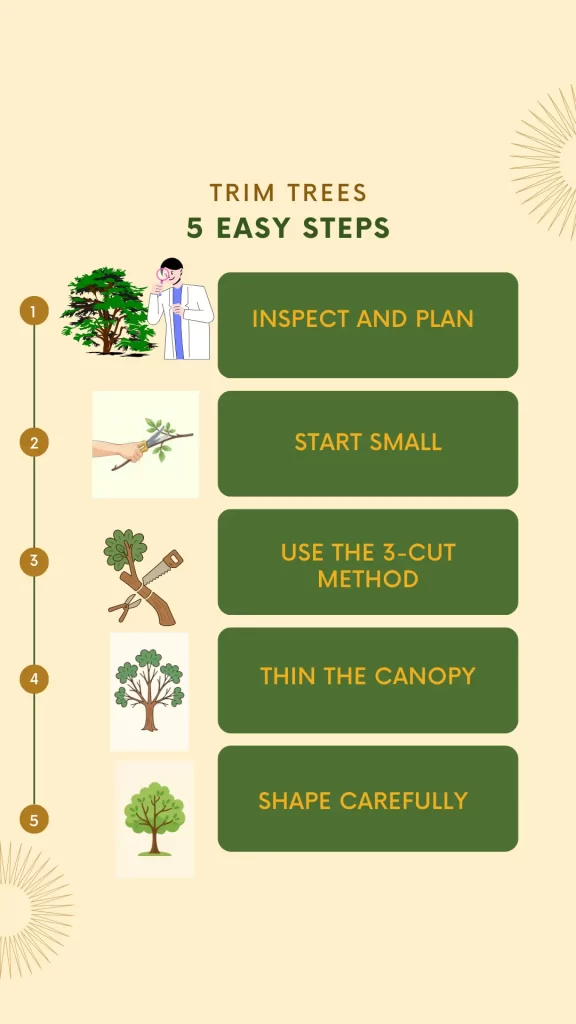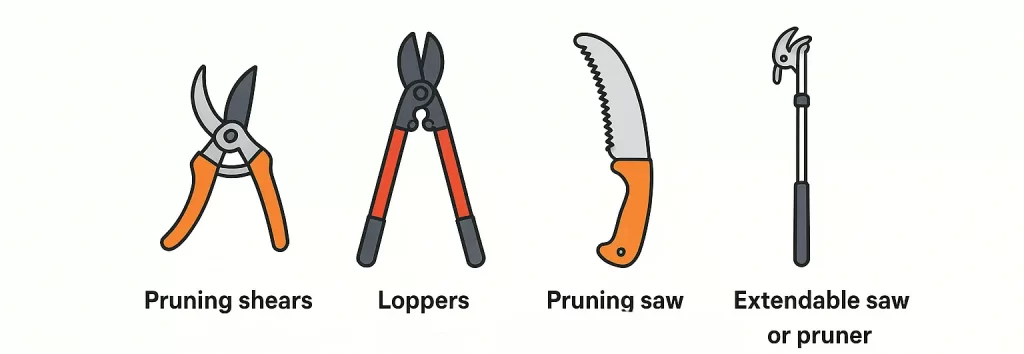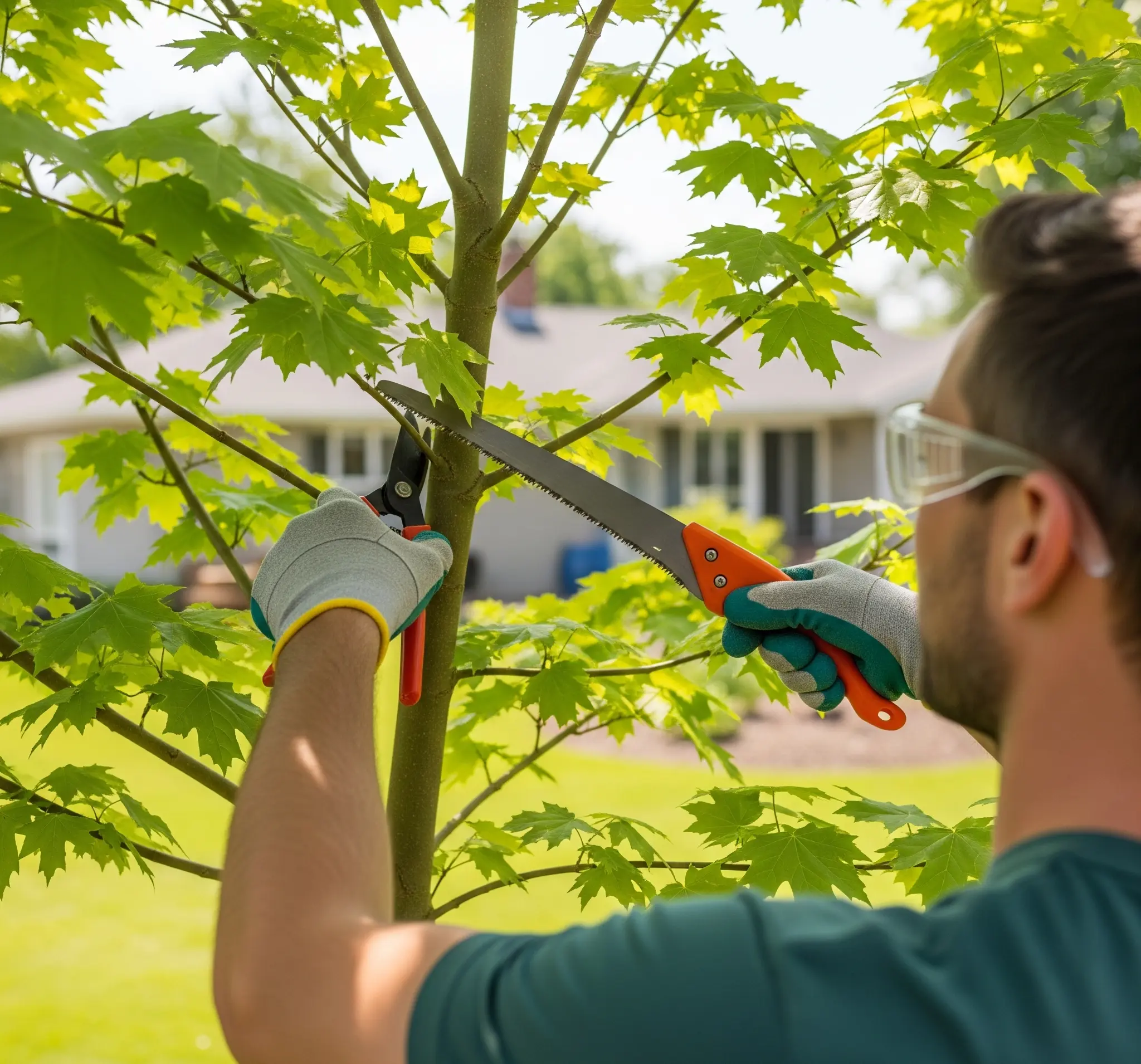How to Trim Trees – A Practical Guide by a Certified Arborist
- July 15, 2025
- John
Table of Contents
In this guide, I will share practical techniques, the best timing, common mistakes to avoid, and real‑world tips to help keep your trees healthy, well‑shaped, and beautiful all year round.
As a Certified Arborist, I have worked alongside Ravi, our field pruning expert, to help hundreds of homeowners across California and beyond. Together, we have seen what works and what can go wrong.
Let’s get started and make tree trimming simpler and safer for you.

Why Proper Tree Trimming Matters
Trimming isn’t just about making your trees look neat. Done the right way, it helps your trees stay:
- Healthier and less likely to attract pests or disease
- Stronger and better able to handle storms and wind
- Well-shaped, which improves safety around your home and adds curb appeal
The real difference comes from knowing how to trim without harming the tree. A few smart cuts can make trees thrive, but the wrong cuts can do lasting damage.
Trimming methods can also vary depending on the type of fruit tree. For example, what works for apple trees may not suit figs or lemons, and olive trees require a different approach altogether.
Best Time to Trim Trees
The best time to trim most trees is late winter to early spring (before new growth starts). This:
- Reduces stress
- Speeds healing
- Helps shape trees before they leaf out
Other timing tips:
- Avoid trimming in the fall: it can trigger weak growth prone to frost damage.
- Light summer trimming (removing deadwood or light shaping) is usually fine, but avoid heavy cuts.
- For California fruit trees, winter pruning is typical; cherries sometimes benefit from an August trim to reduce disease.
If you’d like to know exactly when to trim different types of trees, why timing matters, and what times of year to avoid, you can read our detailed seasonal guide, Best Time to Trim Trees. It includes month-by-month advice and real examples.
Tip: Always check local extension services for tree-specific guidance, especially if you have fruit trees or subtropical varieties.
5 Easy Steps to Trim Trees Yourself
Over the years, as a certified arborist, I’ve worked with many homeowners to keep their trees healthy, safe, and beautiful. Together with Ravi, our pruning specialist who handles the day-to-day cutting, we’ve put together this practical, easy-to-follow method:
- Step 1: Inspect and Plan – Walk around your tree and look for dead, damaged, or crossing branches. Think about the shape you want and which cuts will help you get there.
- Step 2: Start Small – For branches up to about ¾ inch thick, use sharp pruning shears. Cut about ¼ inch above an outward-facing bud at a 45° angle. This helps new growth follow the shape you want.
- Step 3: Use the 3-Cut Method on Large Branches – Undercut about 18 inches from the trunk, cut halfway through from below. Top cut 1 inch further out from the top; this removes most of the branch without tearing bark. Final cut just outside the branch collar.
- Step 4: Thin the Canopy – Remove roughly 10–20% of the smaller branches to let in more light and air. Focus on keeping the tree balanced and natural-looking.
- Step 5: Shape Carefully – Always keep the tree’s natural form in mind. For tall trees, use crown reduction by trimming back to lateral branches instead of topping, which can weaken the tree.
Tip from Ravi: “Don’t rush. Step back every few cuts to see the shape. You’ll spot what needs adjusting before it’s too late.”

Not sure about doing it yourself? Our certified arborists can help keep your trees safe and beautiful.
Best Tools for Trimming Trees
Choosing the right tools keeps trimming safer, easier, and healthier for your trees. Here’s what I recommend from years in the field:
Pruning shears – great for small branches and fine cuts. Always keep them sharp for cleaner results.
Loppers – ideal for medium branches up to around 2 inches thick. The longer handles make cutting easier with less effort.
Pruning saw – useful for thicker limbs that shears and loppers can’t handle. A curved blade often makes cutting smoother.
Extendable saw or pruner – helps you reach higher branches safely without needing to climb.
And as Ravi often reminds our team, always wear gloves, safety glasses, and a helmet when needed. Taking a moment to gear up protects you from unexpected injuries.
Want to see how our team uses these tools on real tree trimming jobs? Check out our full guide on Recommended Tree Trimming Tools, How to Use Them, Their Benefits, and Expert Picks.

Common Tree Trimming Mistakes to Avoid
Mistakes to Avoid
Topping the tree
Cutting off the top branches forces weak, fast regrowth that breaks easily and can shorten the tree’s life.
Flush cuts
Cutting into the branch collar stops the tree from sealing the wound properly, inviting pests and disease.
Too much at once
Removing more than ~30% of the canopy can shock the tree and slow new growth.
Using dull tools
Rough, torn cuts don’t heal well and can leave the tree vulnerable.
“From what I’ve seen, avoiding these mistakes makes a huge difference in keeping trees healthy, balanced, and beautiful.”
Real Example from Our Team

Last spring, I teamed up with John to help a homeowner with a 4-year-old maple that had started growing too tall. We removed around 20% of the canopy, made sure every cut stayed just outside the branch collar, and used the 3-cut method on thicker branches. The tree kept its natural, balanced shape, and after trimming, it looked healthier and stood up better to windstorms.
Advanced Tips
- Keep trees compact: Use heading cuts to trim back to lateral buds or side branches while keeping a natural shape.
- Reduce height safely: Choose crown reduction instead of topping to keep the tree’s structure strong and balanced.
- Encourage more blooms: Time pruning based on when the tree flowers. Prune spring bloomers right after flowering, and prune summer bloomers in late winter or early spring to boost flowering.
DIY vs. Professional Tree Trimming
Light pruning and shaping can often be done safely by homeowners, especially when using the right tools, following best practices, and focusing on small, reachable branches.
But for larger trees, those growing near power lines, or when you’re unsure which branches to remove, it’s usually safer and smarter to call certified arborists. Professionals bring experience, proper equipment, and an eye for long-term tree health, helping protect both your property and your trees’ future growth.
Practical Takeaways from Our Arborist Team
- Trim in late winter for healthier regrowth.
- Always make clean cuts just outside the branch collar.
- Avoid removing more than 25–30% of the canopy at once.
- Keep your tools sharp and clean for smoother cuts.
- When in doubt, consult a certified arborist to protect your tree’s health.
Keeping your trees healthy doesn’t have to be complicated. Just follow these practical tips, take your time, and when in doubt, get expert advice to keep your trees looking their best for years to come.